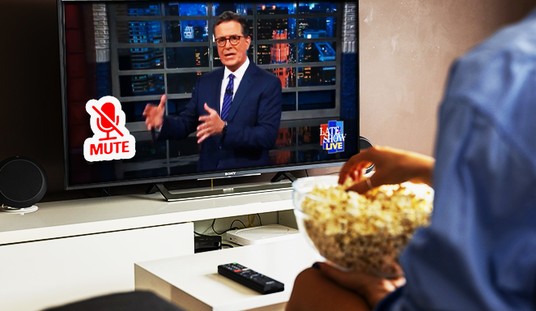Two different narratives are apparent following today’s news conference on Beijing’s response to the demonstrations in Hong Kong.
The first is from China News Service – one of the government-owned news agencies mainly serving Hong Kong.
Some members of the public had been participating in unauthorized assemblies at various locations on Hong Kong Island since Sunday afternoon, a spokesman of the Hong Kong SAR government said.
“Some radical protesters acted violently in parts of Sheung Wan and Western District, including hurling bricks at police officers, committing arson and pushing towards the police cordon line a cart with burning cardboards, threatening the safety of police officers and members of the public,” the spokesman said.
While strongly condemning the radical protesters, the spokesman said the HKSAR government will continue to give full support to the police to strictly enforce the law to stop all violent acts with a view to resuming public order as soon as possible.
According to the spokesman, some members of the public occupied the roads in Causeway Bay, and they damaged public properties and obstructed traffic with barriers, seriously affecting public services such as buses and trams.
“We express regret over such behaviors which are illegal and caused inconvenience to members of the public,” the spokesman said, appealing once again to members of the public to express views in a peaceful and rational manner and abide by the law.
China’s main news service, Xinhua, is taking a similar stance by claiming it’s a small number of people involved in the protests against law and order. Their story also suggests, “once the backbone of rule of law was shaken, the prosperity and stability of Hong Kong would be in jeopardy.” All very quid quo pro and standard fare for government-run groups.
The second narrative is quite different which should not be surprising given the fact it’s coming from privately-owned news entities. South China Morning Post published a transcript of the news conference which includes more information on what Beijing thinks about the demonstrators and if Chinese troops would get involved.
Q: What would Beijing do to assure Hong Kong that “one country, two systems” is in place?
Yang: “This depends on how they understand the situation. It is a complete ideology. There are three bottom lines: no harm to national security, no challenge to the central government’s authority and the Basic Law, and no using Hong Kong as a base to undermine China.”
Q: What does Beijing think of Carrie Lam’s performance?
Xu: “She has done lots of work since taking office. We have noted that the government has done a thorough review of its deficiencies … The government will be more inclusive and listen to different opinions.”
Q: Would the Hong Kong garrison of the Chinese army be deployed on streets?
Yang: “The Basic Law has clear statements on that question, and I have nothing to add.”
The Economist’s write up paints an even more dire picture of what might be coming for Hong Kong.
IT LOOKED ominous. On July 29th, at a press conference held in Beijing and conducted in Mandarin (rather than the Cantonese spoken in Hong Kong), Hong Kongers would hear directly from the Chinese government’s Hong Kong and Macau Affairs Office. This was the first such briefing the HKMAO had given since Hong Kong reverted from British to Chinese sovereignty in 1997; and it came after weeks of protest in Hong Kong which seemed to have stretched the patience of the central government to the limit. In the event, what was said was less dramatic than some had feared. But it will have done little to quell frustrations in the territory.
Yang Guang, who is a spokesman rather than a policymaker, told reporters that the anger in Hong Kong had stemmed from a “misunderstanding” of China’s legal system…He then outlined China’s red lines regarding Hong Kong: no harm to national security; no challenge to the central government’s authority and the Basic Law, Hong Kong’s mini-constitution; and no use of Hong Kong as a base from which to undermine China. In line with China’s view that foreign forces are behind the protests, he attacked “irresponsible” Western commentators who have backed “violent and illegal actions” by the protesters. He dodged a question about protesters’ demand for an independent inquiry—Beijing still tries to avoid being seen to be setting policy in Hong Kong. But he stopped short of ruling out the possibility of deploying the Chinese army, which has been garrisoned in Hong Kong since 1997. When asked by a journalist whether it could be deployed on the streets he simply pointed to the relevant sections of the Basic Law.
It’s important to note both SCMP and The Economist focus more on the fact troops could end up being deployed to support Hong Kong police – something noticeably missing from the Chinese government-run outlets. SCMP declined to mention the Triads – who may be involved in some of the violence – while The Economist made sure people knew criminal gangs had been attacking non-violent demonstrators.
The other interesting sub-narrative is how the Hong Kong government is handling things. Both The Economist and SCMP have been critical of Chief Executive Carrie Lam. The former paints her as a rather aloof, inept figure while the latter wants her to come off her high horse. It shouldn’t be surprising to see nothing mentioned on the government-run sites which it might shake the confidence of the general populace. Or their betters who currently sit in Beijing.
What happens next is obviously the big question no one seems to know. The Economist is especially worried about a repeat of Tiananmen Square while SCMP seems to believe that won’t happen due to public opinion. Another large rally – this time featuring Hong Kong government workers who want Lam to meet the demands of protesters – is later this week. Here we go…








Join the conversation as a VIP Member